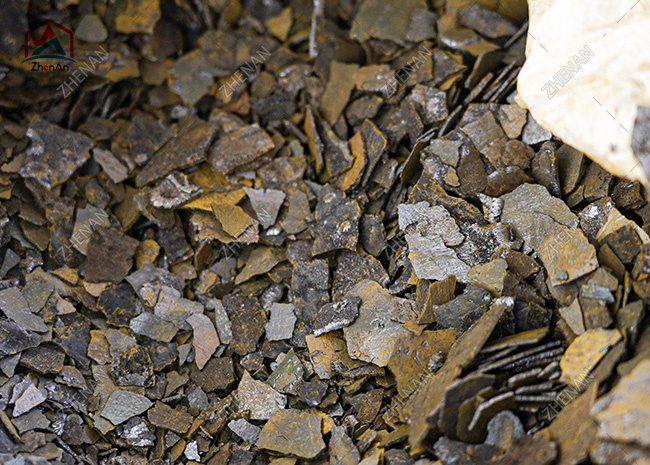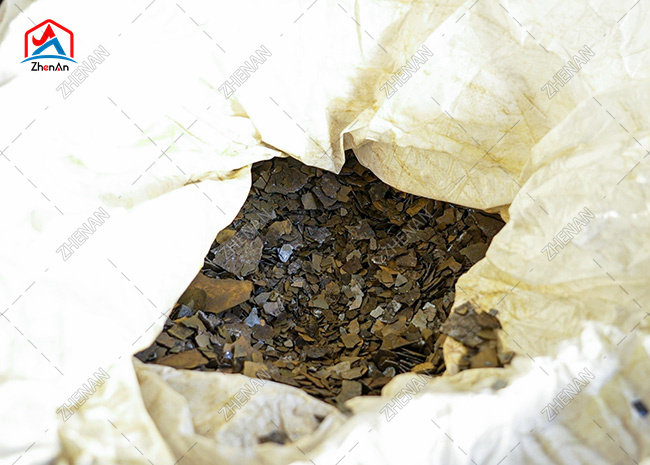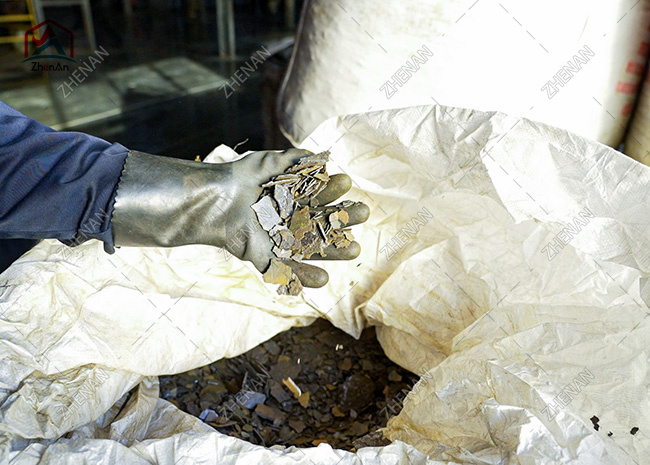Vanadium pentoxide is an oxide of vanadium with the chemical formula V₂O₅. Its flakes structure is a result of its layered crystalline arrangement, which provides high surface area, excellent redox properties, and significant catalytic activity.
Applications of Flakes Vanadium Pentoxide (V₂O₅)
Unlike other forms of V₂O₅, the flakes morphology enhances its performance in various applications, such as:
Catalysis for industrial processes.
Energy storage in batteries and supercapacitors.
Environmental applications like pollutant removal and gas sensing.
Optoelectronics for advanced technologies.
The combination of these properties makes flakes V₂O₅ a highly sought-after material across multiple industries.
1.Applications in Catalysis
Industrial Catalysis
flakes V₂O₅ is widely used as a catalyst in industrial chemical reactions due to its strong redox behavior and high thermal stability. It plays a pivotal role in the following processes:
Sulfuric Acid Production:
flakes V₂O₅ is a critical catalyst in the contact process, where it facilitates the oxidation of sulfur dioxide (SO₂) to sulfur trioxide (SO₃), a key intermediate in sulfuric acid production. Its high surface area ensures efficient conversion rates and durability under harsh reaction conditions.
Selective Oxidation of Hydrocarbons:
In the petrochemical industry, flakes V₂O₅ is used to oxidize hydrocarbons like n-butane into maleic anhydride, an important precursor for polymers and resins. The layered structure enhances the selectivity and yield of the reaction.
Ammonia Removal and NOx Reduction:
V₂O₅-based catalysts are integral to Selective Catalytic Reduction (SCR) systems, which reduce nitrogen oxides (NOx) emissions from industrial exhaust gases. The flakes morphology ensures efficient ammonia adsorption and reaction with NOx, producing environmentally benign nitrogen and water.
Green Chemistry
flakes V₂O₅ has also found applications in green chemistry, where it facilitates environmentally friendly reactions. For instance, it is used in the oxidation of alcohols to aldehydes or ketones without producing harmful byproducts. This aligns with global efforts to reduce chemical waste and adopt sustainable practices.
2.Applications in Energy Storage
Lithium-Ion Batteries (LIBs)
flakes Vanadium Pentoxide has emerged as a promising cathode material in lithium-ion batteries due to its high theoretical capacity (~294 mAh/g). The layered structure allows for efficient lithium-ion (Li⁺) intercalation and deintercalation, which enhances battery performance in terms of:
Energy Density: The high capacity translates to longer battery life.
Cycling Stability: The mechanical integrity of the flakes structure reduces capacity fade over multiple charge/discharge cycles.
Rate Capability: Fast Li⁺ diffusion through the layers ensures rapid charging and discharging.
These properties make flakes Vanadium Pentoxide suitable for use in electric vehicles (EVs), portable electronics, and renewable energy storage.
Sodium-Ion Batteries (SIBs)
With the rising demand for cost-effective and sustainable energy storage, sodium-ion batteries are gaining traction as an alternative to lithium-ion batteries. flakes Vanadium Pentoxide serves as an excellent cathode material for SIBs due to its ability to accommodate larger sodium ions (Na⁺) without significant structural degradation. This makes it a viable option for grid-scale energy storage systems.
Supercapacitors
Supercapacitors require materials with high surface area and excellent redox properties for efficient energy storage. Vanadium Pentoxide flakes fulfills these requirements, offering:
High Capacitance: Due to the layered structure and high conductivity.
Long Lifespan: As a result of its robust mechanical and electrochemical stability.
These features make V₂O₅-based supercapacitors ideal for applications requiring rapid energy delivery, such as regenerative braking systems in vehicles and backup power supplies.
Environmental Applications
Pollutant Removal
flakes Vanadium Pentoxide has proven effective in removing pollutants from both air and water. Some notable applications include:
Photocatalytic Degradation of Organic Pollutants:
When exposed to light, flakes vanadium pentoxide generates reactive oxygen species that break down organic pollutants in wastewater, such as dyes, pesticides, and pharmaceuticals. Its high surface area accelerates the degradation process, making it an efficient photocatalyst.
Gas Sensing and Air Purification:
Vanadium pentoxideflakes V₂O₅ is sensitive to toxic gases like ammonia (NH₃), hydrogen sulfide (H₂S), and nitrogen oxides (NOx). This makes it suitable for gas sensors used in industrial safety and environmental monitoring. Additionally, it can catalyze the oxidation of harmful gases into less toxic forms, contributing to air purification.
Heavy Metal Removal
The ion-exchange properties of vanadium pentoxide flakes allow it to remove heavy metal ions, such as lead (Pb²⁺) and arsenic (As³⁺), from contaminated water. This application is particularly valuable in regions facing water scarcity and pollution, as it provides a low-cost and efficient solution for water treatment.
4.Applications in Optoelectronics
The semiconducting nature of flakes V₂O₅ makes it a potential material for optoelectronic devices, such as:
Smart Windows: By modulating its optical properties in response to external stimuli (e.g., voltage), V₂O₅ can be used in energy-efficient smart windows.
Photodetectors: flakes vanadium pentoxide exhibits excellent photoresponse, making it suitable for detecting light in various wavelengths.
Electrochromic Displays: Its ability to change color under an electric field enables its use in low-power display technologies.
These applications highlight the versatility of flakes vanadium pentoxide in next-generation electronic devices.
Challenges and Future Perspectives
Despite its numerous advantages, the widespread application of vanadium pentoxide flakes V₂O₅ faces some challenges:
Scalability: Producing flakes V₂O₅ with consistent quality and morphology on a large scale can be expensive and technically demanding.
Stability: Although V₂O₅ shows excellent performance in controlled environments, its stability under real-world conditions, such as high humidity or extreme temperatures, needs improvement.
Toxicity Concerns: Vanadium compounds can be toxic, raising concerns about their environmental and health impacts during production and disposal.
Future Directions
To address these challenges, researchers are exploring:
Composite Materials: Combining flakes vanadium pentoxide with other materials (e.g., graphene, carbon nanotubes) to enhance stability and performance.
Green Synthesis Methods: Developing eco-friendly production techniques to reduce environmental impact.
Lifecycle Analysis: Conducting comprehensive studies to evaluate the environmental footprint of V₂O₅-based technologies.
With these advancements, the potential of vanadium pentoxide flakes V₂O₅ in various industries is expected to grow significantly.
flakes vanadium pentoxide (V₂O₅) is a versatile material with applications spanning catalysis, energy storage, environmental remediation, and optoelectronics. Its unique layered structure and exceptional physicochemical properties make it a valuable resource for addressing some of the world's most pressing challenges, including sustainable energy and environmental protection.



.jpg)